Estimated reading time: 4 minutes
Since the UP-Agric Feedlot Challenge kicked off on 5 July 2022, sleeping in has become a thing of the past for the university’s final-year animal science students. Every day, they arrive at the feedlot at dawn and return in the afternoon to feed their cattle. They have also realised that it is hard work to mix feed – there is no longer a need for a gym membership!
Feed is one of the biggest expenses of a feedlot. To decide if it is the right time to start a feedlot, one would consider the ratio of beef price to grain (a ratio of 1:14 or higher is advantageous) and whether the feed cost to produce one kilogram of meat is cheaper than the price of one kilogram of meat.
In a feedlot we want cattle to consume as much feed as they can. Typically, cattle will consume approximately 3% of their bodyweight daily, with lighter animals consuming slightly more. Heavier animals consume approximately 2,7 % of their bodyweight. Since the rumen has a capacity limit, we need to make sure that each mouthful of feed is balanced to ensure that the animal’s maintenance and growth requirements are met for optimal production. Therefore, it is necessary to scientifically formulate the diet of feedlot cattle.
Feeding phases to consider
As calves grow in the feedlot, their nutritional requirements change. Hence, there are different feeding phases to keep track of. Each phase differs slightly in terms of the roughage to concentrate ratio, and in terms of the energy to protein ratio.
Read about preparing cattle for the feedlot.
Before entering the feedlot, calves are first kept on pastures and backgrounded with a concentrate supplement. The first phase in the feedlot is the starter phase, which includes the adaptation period, usually lasting ten to 14 days. The adaptation period is important because we need to prepare the ruminal microbes – which are responsible for fermenting the consumed feed – to move from a roughage-based (high fibre, low energy) diet to a concentrate-based (low fibre, high energy) diet.
Moving from veld to the concentrate diet will immediately cause digestive disturbances and health issues. The roughage to concentrate ratio during the adaptation period will gradually change in 20% intervals every second or third day until cattle are fully adapted to the feedlot diet.
The second phase is the grower phase which typically lasts for 70 to 80 days, followed by the finisher phase for approximately 30 days. During the different feeding phases, the nutrient requirements of the cattle change along with the metabolisable energy concentration of the diets, increasing from approximately 10,5MJ/kg dry matter (DM) to 12,3MJ/kg DM, and protein concentrations decreasing from approximately 16 to 13% from the starter ration to the finisher ration.
Optimum mixing of the feed ingredients is also important as it will ensure a uniform distribution of nutrients, vitamins and minerals, which will result in a homogeneous nutrient intake with each bite. Feedlot operators and managers should be careful not to over-mix or under-mix the ration, as this will lead to below-optimal animal performance and a reduced growth rate.
How to mix feed
The aim should be to achieve an average growth rate of 1,8kg per day. The sequence of mixing or adding feed ingredients is also important for a homogeneous and balanced ration. Large-volume ingredients should be added first, followed by small volume ingredients. If the formulation requires a liquid ingredient or water to be added it must be added only after all the dry ingredients are in the mixer.
The importance of water in feeding cattle should not be neglected. It is often forgotten that water is a nutrient, and it is not just any nutrient – it is one of the most important nutrients. Water is needed for all metabolic processes, temperature regulation, chemical reactions, waste excretion, and overall health. Non-heat-stressed cattle can drink up to 5 to 6% of their bodyweight in water daily.
Water consumption also influences feed intake. For every kilogram of DM consumed, cattle will drink approximately five litres of water (or more in hotter environments). The water content of the ration offered to cattle will also influence intake, as feed that is too dry will be less palatable to the cattle.
A common misconception among consumers is that livestock and cattle compete with humans for food and raw materials. In fact, most feed ingredients in the cattle industry are by-products of the human food industry, second-grade grains, roughages, and feed additives.
Approximately 70% of a typically formulated feedlot diet is inedible to humans. Thanks to the rumen, cattle have the unique ability to convert difficult-to-digest feed sources with low nutritional value into delicious, healthy and highly bioavailable products that are nutrient-dense, such as milk and beef. – Amelia du Preez, technical advisor, Devenish
Read other articles in this series:
- Buying calves for a feedlot: What to look for
- The ins and outs of processing feedlot cattle
- The importance of proper animal handling
- General feedlot management
- The importance of carcass quality in beef production






